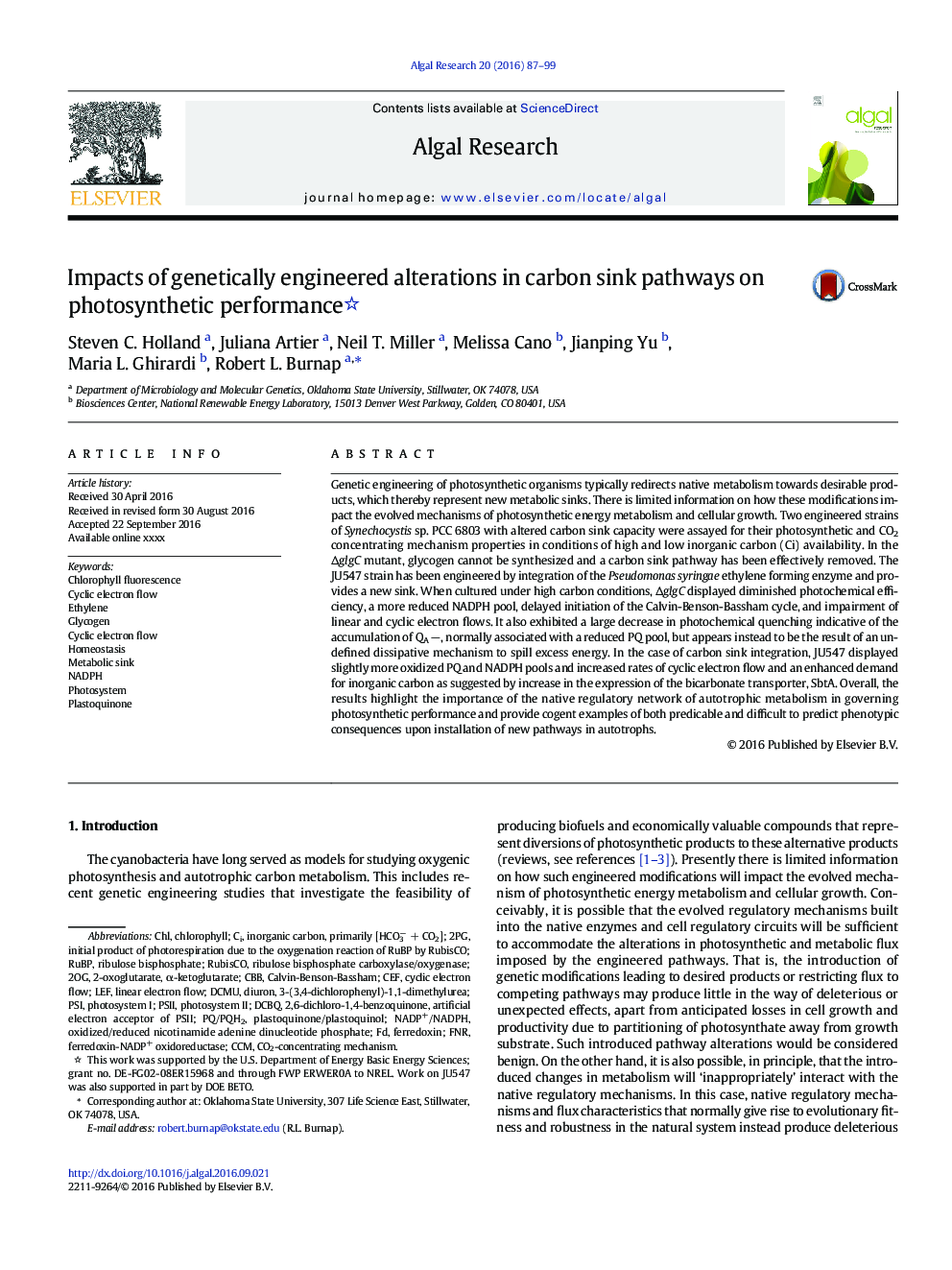| Article ID | Journal | Published Year | Pages | File Type |
|---|---|---|---|---|
| 5478593 | Algal Research | 2016 | 13 Pages |
Abstract
Genetic engineering of photosynthetic organisms typically redirects native metabolism towards desirable products, which thereby represent new metabolic sinks. There is limited information on how these modifications impact the evolved mechanisms of photosynthetic energy metabolism and cellular growth. Two engineered strains of Synechocystis sp. PCC 6803 with altered carbon sink capacity were assayed for their photosynthetic and CO2 concentrating mechanism properties in conditions of high and low inorganic carbon (Ci) availability. In the ÎglgC mutant, glycogen cannot be synthesized and a carbon sink pathway has been effectively removed. The JU547 strain has been engineered by integration of the Pseudomonas syringae ethylene forming enzyme and provides a new sink. When cultured under high carbon conditions, ÎglgC displayed diminished photochemical efficiency, a more reduced NADPH pool, delayed initiation of the Calvin-Benson-Bassham cycle, and impairment of linear and cyclic electron flows. It also exhibited a large decrease in photochemical quenching indicative of the accumulation of QAÂ â, normally associated with a reduced PQ pool, but appears instead to be the result of an undefined dissipative mechanism to spill excess energy. In the case of carbon sink integration, JU547 displayed slightly more oxidized PQ and NADPH pools and increased rates of cyclic electron flow and an enhanced demand for inorganic carbon as suggested by increase in the expression of the bicarbonate transporter, SbtA. Overall, the results highlight the importance of the native regulatory network of autotrophic metabolism in governing photosynthetic performance and provide cogent examples of both predicable and difficult to predict phenotypic consequences upon installation of new pathways in autotrophs.
Keywords
PSICEFDCBQCO2-concentrating mechanismCBBChl2OGPSIIFNRNADPHRuBisCODCMURuBPNADP+/NADPHFerredoxin-NADP+ oxidoreductase2PGCCmEthyleneLinear electron flowCyclic electron flowribulose bisphosphate carboxylase/oxygenaseribulose bisphosphateChlorophyllPhotosystemphotosystem IPhotosystem IIFerredoxinChlorophyll fluorescenceLefHomeostasisplastoquinoneGlycogen
Related Topics
Physical Sciences and Engineering
Energy
Renewable Energy, Sustainability and the Environment
Authors
Steven C. Holland, Juliana Artier, Neil T. Miller, Melissa Cano, Jianping Yu, Maria L. Ghirardi, Robert L. Burnap,
